- Share
- Like
- Tweet
- Digg
- Tumblr
- VKontakte
- Love This
- Odnoklassniki
- Meneame
- Blogger
- Amazon
- Yahoo Mail
- Gmail
- AOL
- Newsvine
- HackerNews
- Evernote
- MySpace
- Mail.ru
- Viadeo
- Line
- Comments
- SMS
- Viber
- Telegram
- Subscribe
- Skype
- Facebook Messenger
- Kakao
- LiveJournal
- Yammer
- Edgar
- Fintel
- Instapaper
- Copy Link
Powerhouse Company has redesigned the lower floors of a 1988 iconic office building in Rotterdam, Netherlands. Located in the former Nedlloyd Group headquarters, designed by one of Rotterdam’s most important post-war architects, the first phase of the project transformed the entrance into a crossover between a hotel lobby, restaurant and coffee bar. Powerhouse Company was commissioned to renovate the 24 storeys of Wim Quist’s iconic Willemswerf Office Building over eight years.

Image © Powerhouse Company
The architects were focused on preserving and enhancing the character of the building: its mastery of materials, great spatial quality and precise detailing. a.s.r. vastgoed vermogensbeheer has involved Powerhouse Company to restore the building to its former glory, by updating its interior in a sensitive and respectful manner.
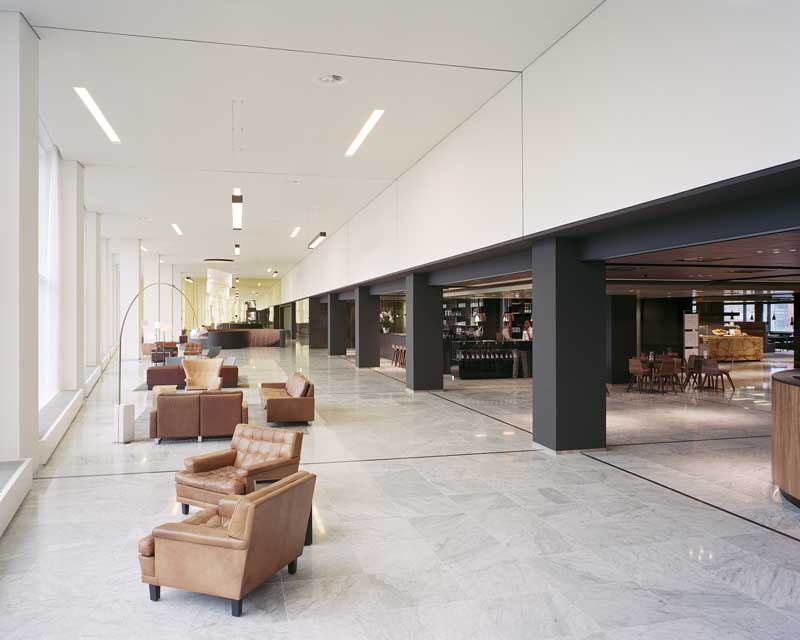
Image © Kim Zwarts
Naturally, it was a great honour. The building – with its distinctive sloping glass trapezoid elevation – was a pioneer of its day, being one of the first buildings to regenerate the banks of the Nieuwe Maas river in the post-industrial landscape, and one of Quist’s most famous works. Willemswerf is characterised by its ‘total concept’ design, where materials, detail and spatial expression are continued inside and out. Central to this is a geometric grid, which forms the basis of all the building’s design decisions – the small, square white ceramic tiles, structural columns, room plan and flooring.
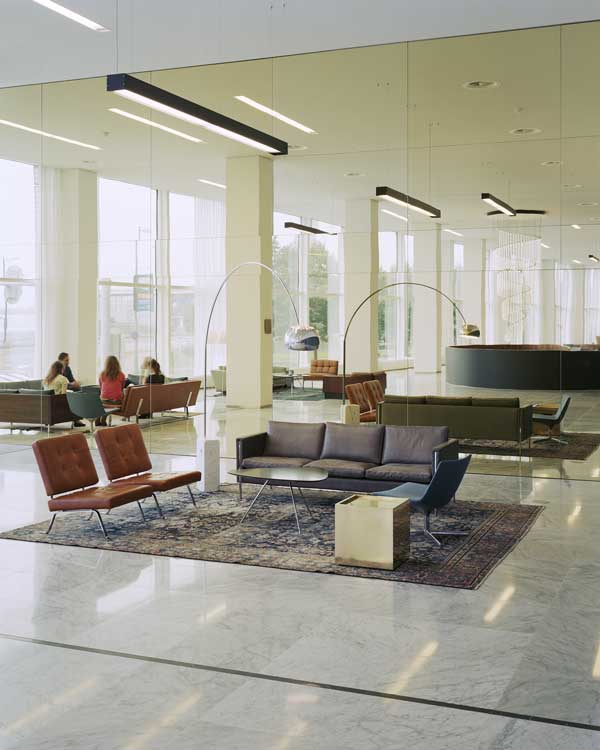
Image © Kim Zwarts
The former oversized empty lobby did not have a substantial function anymore. It was originally designed for a single-tenant building, but now that it had become a multi-tenant building, it was not particularly ‘owned’ by anyone. Powerhouse Company decided to move the restaurant, previously located on the first floor, into the lobby. The move allowed for extra floor of rentable office space. A coffee bar and seating areas were also added in the lobby, creating a suitable space for receiving clients and visitors.
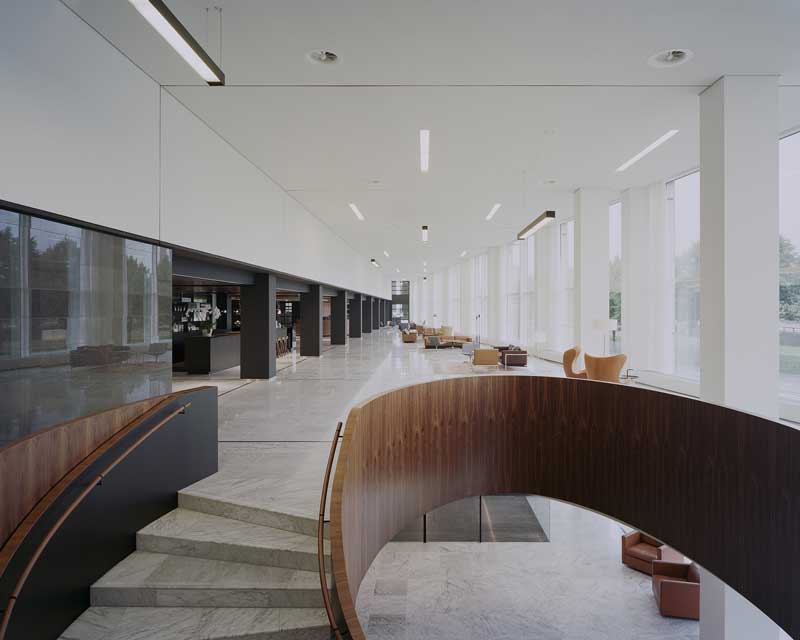
Image © Kim Zwarts
The architects used Quist’s existing geometric grid as a guiding principles, adding warm, luxurious materials such as marble and wood, to create a more welcoming experience. Powerhouse Company collaborated with the original architect, seeking his expertise and contribution to the project.
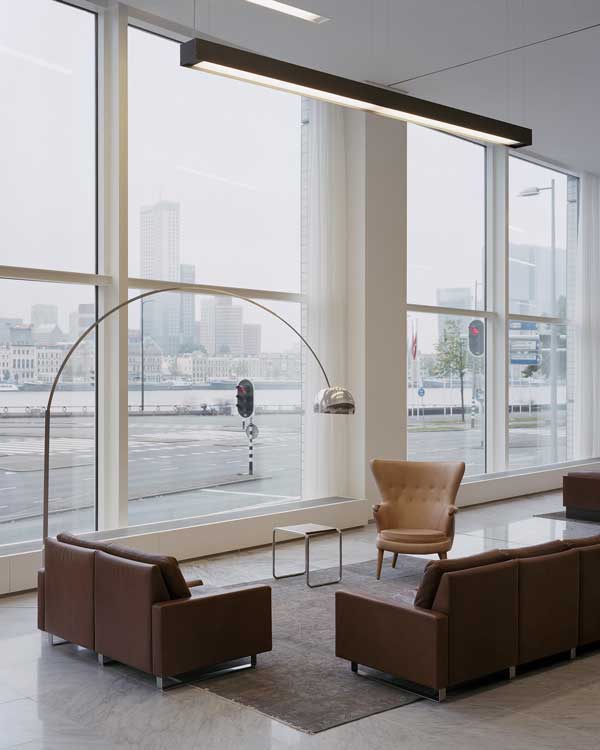
Image © Kim Zwarts
The concept to design an “office as a hotel” was incorporated right from the start. The entrance has been opened up by new surfacing and a clean-line glazed wall. A helix staircase featuring dark wood balustrade connects the lobby to the upper floor. Nanne de Ru has custom designed a spiral pendant light that hangs over the staircase, reflecting light in a mirrored wall.
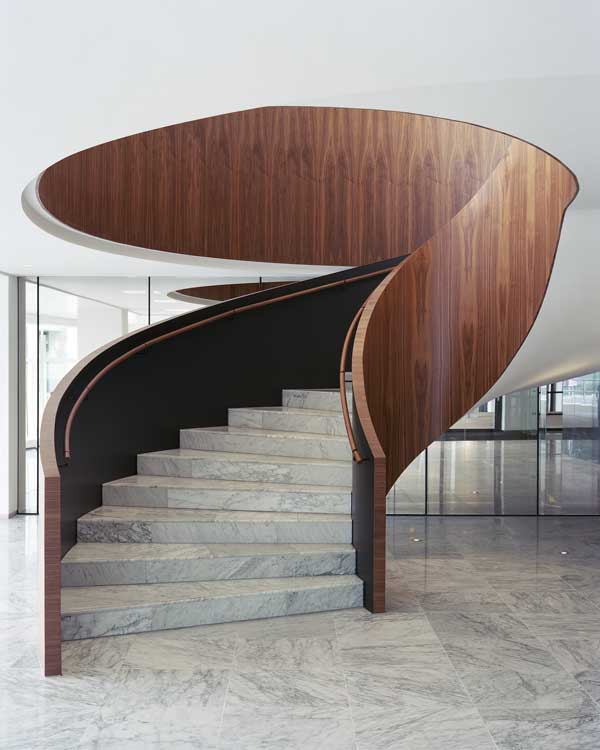
Image © Kim Zwarts
Original artwork was replaced by clusters of classic Modernist sofas, armchairs and coffee tables, to create a lobby-like meeting place for informal business. “Worn-out rugs from Morocco and standing lamps give intimacy to each of the seating areas by marking out imaginary walls and rooms”, reveal the architects.
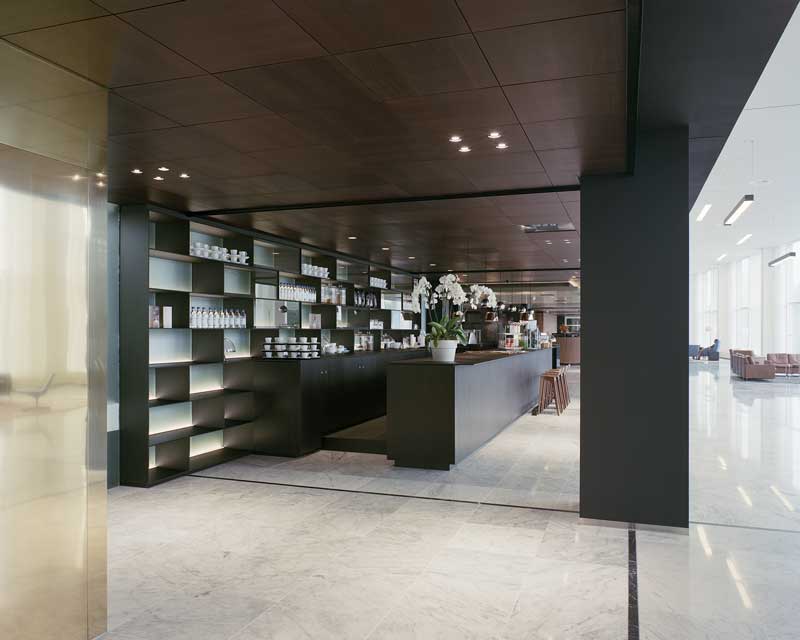
Image © Kim Zwarts
To serve the lobby, a high-quality coffee bar and brasserie has been established around a new central core, overlooking the lobby and the river, while the brasserie tables have views out onto the Hertekade. In the lobby, the architects incorporated a central core that acts like a large piece of fitted furniture, containing the kitchen, scullery, bathrooms, elevators, service amenities and four cosy six-person diner-style, leather-upholstered seating booths.
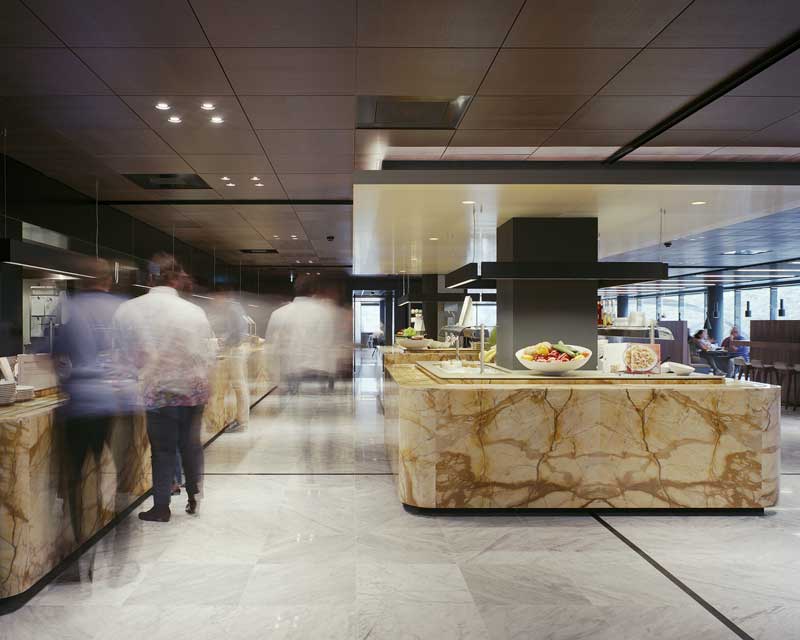
Image © Kim Zwarts
Dark brown marble has now replaced the white tiles previously used in the lobby, all aligned to the ‘all-important grid’. The original scheme that incorporated concrete, tiles and while marble was used on some of the bathroom walls and doors. The architects incorporated new materials to create a more tactile and ‘colourful’ experience, such as the sparkling black mosaic in the toilet cubicles, brown Sierra Elvira marble wall covering, and wood seen on the main staircase, as well as the restaurant and bar.
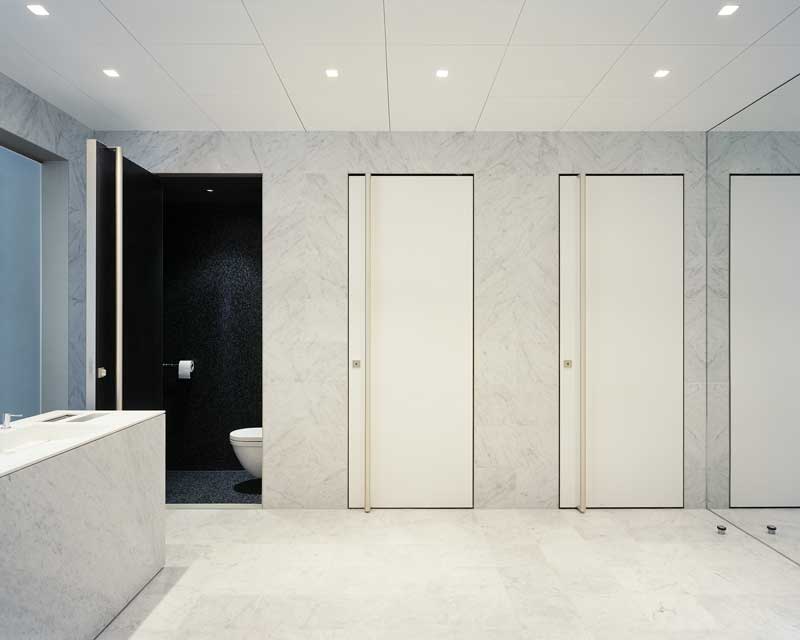
Image © Kim Zwarts
Brass also has a strong presence in the redesign: on the elevator surround, striking yellow-gold giallo Siena marble facing to the brasserie self-service bar and full end wall tinted mirror.
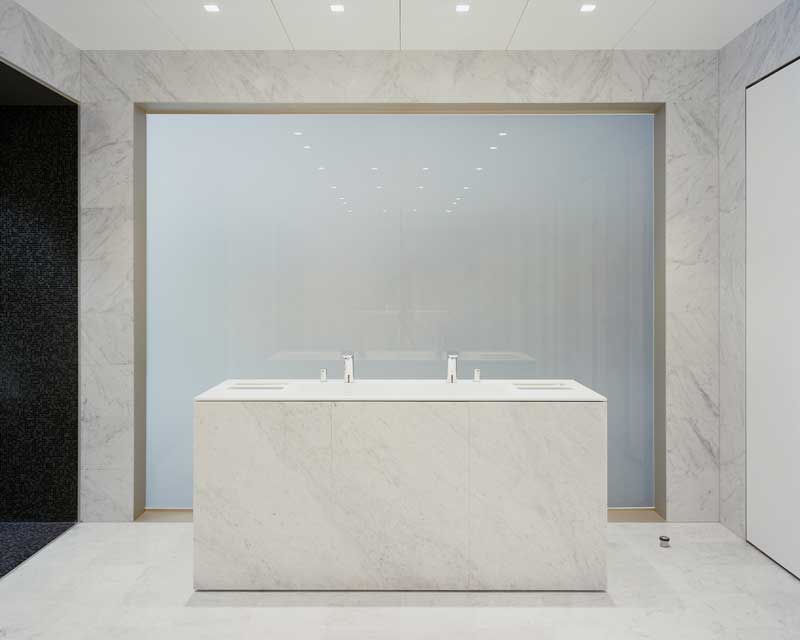
Image © Kim Zwarts
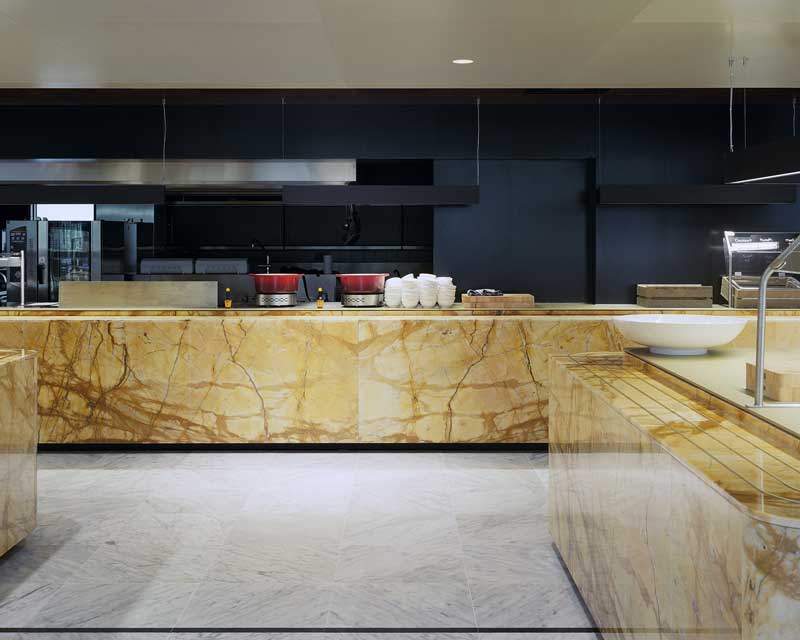
Image © Kim Zwarts
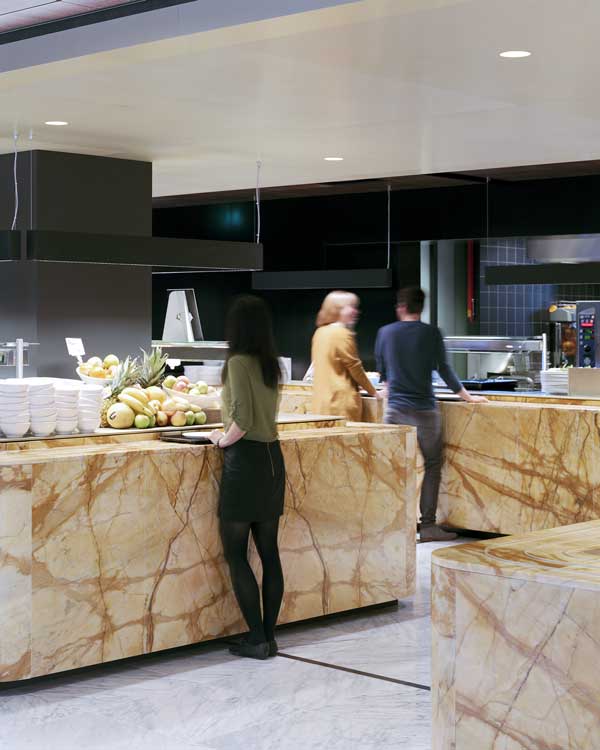
Image © Kim Zwarts
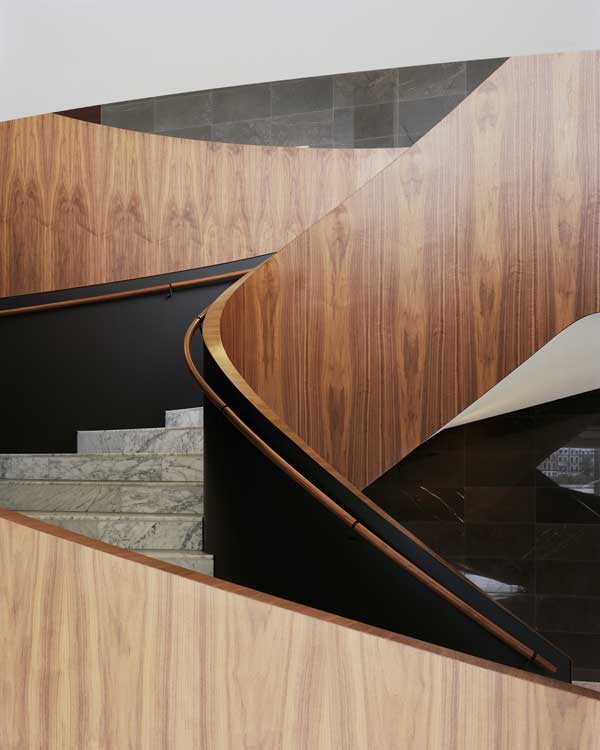
Image © Kim Zwarts
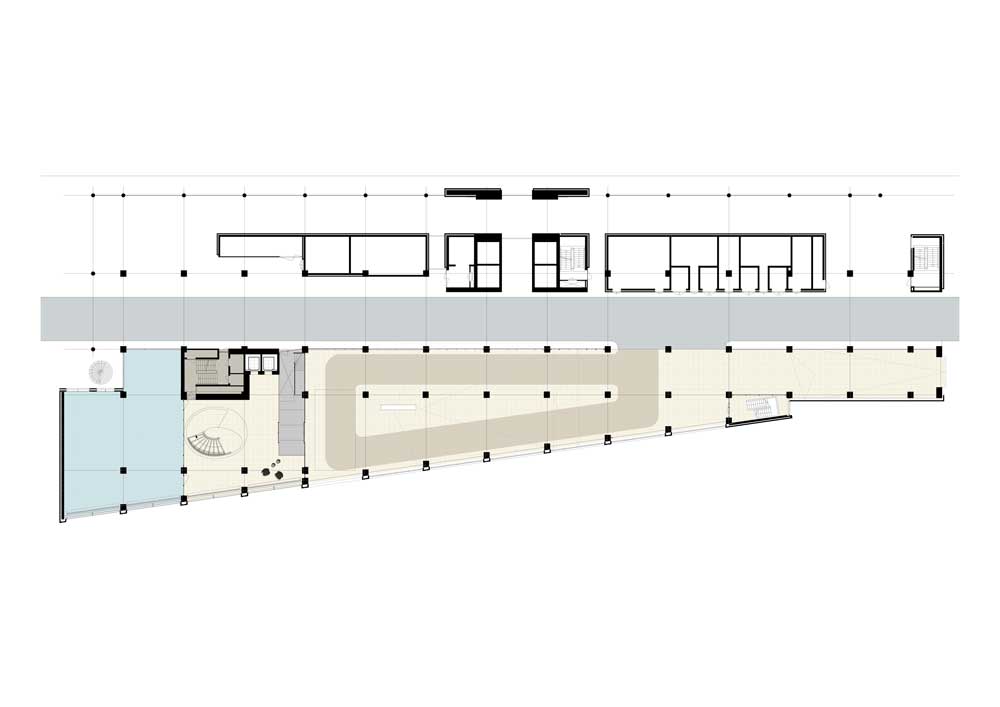
Image © Powerhouse Company
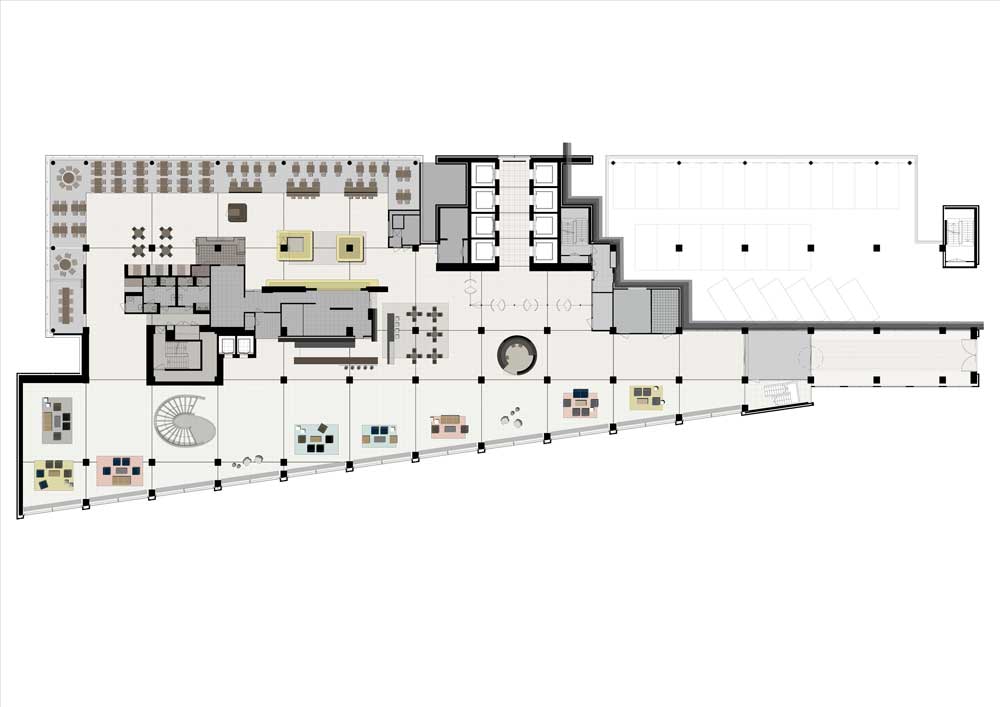
Image © Powerhouse Company
Facts:
Timescales: 2012 – 2020
Location: Rotterdam, the Netherlands
Client: a.s.r. vastgoed vermogensbeheer
Area: 3.560 m. (main lobby), 2.890 m. (elevator lobbies)
Budget: € 8.700.000
Partner in charge: Nanne de Ru
Project leader: Sander Apperlo
Team: Nanne de Ru, Sander Apperlo, Donna van Milligen Bielke, Paul Valeanu, Stefan Prins
Structural Engineering: Royal Haskoning DHV
Installation Engineering: Herman de Groot Ingenieurs
Contractor: J.P. van Eesteren B.V.
*All images and information courtesy of Powerhouse Company.
